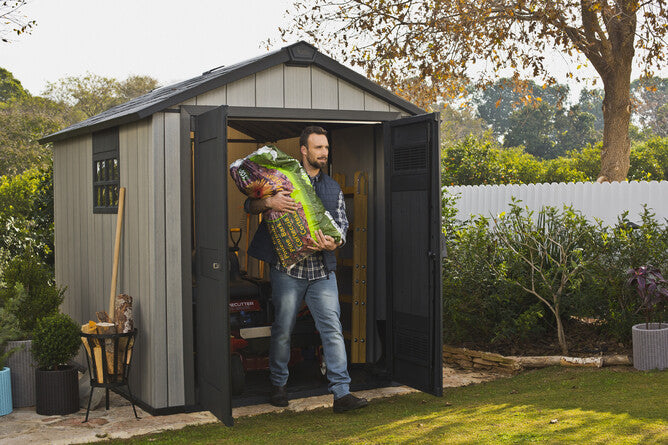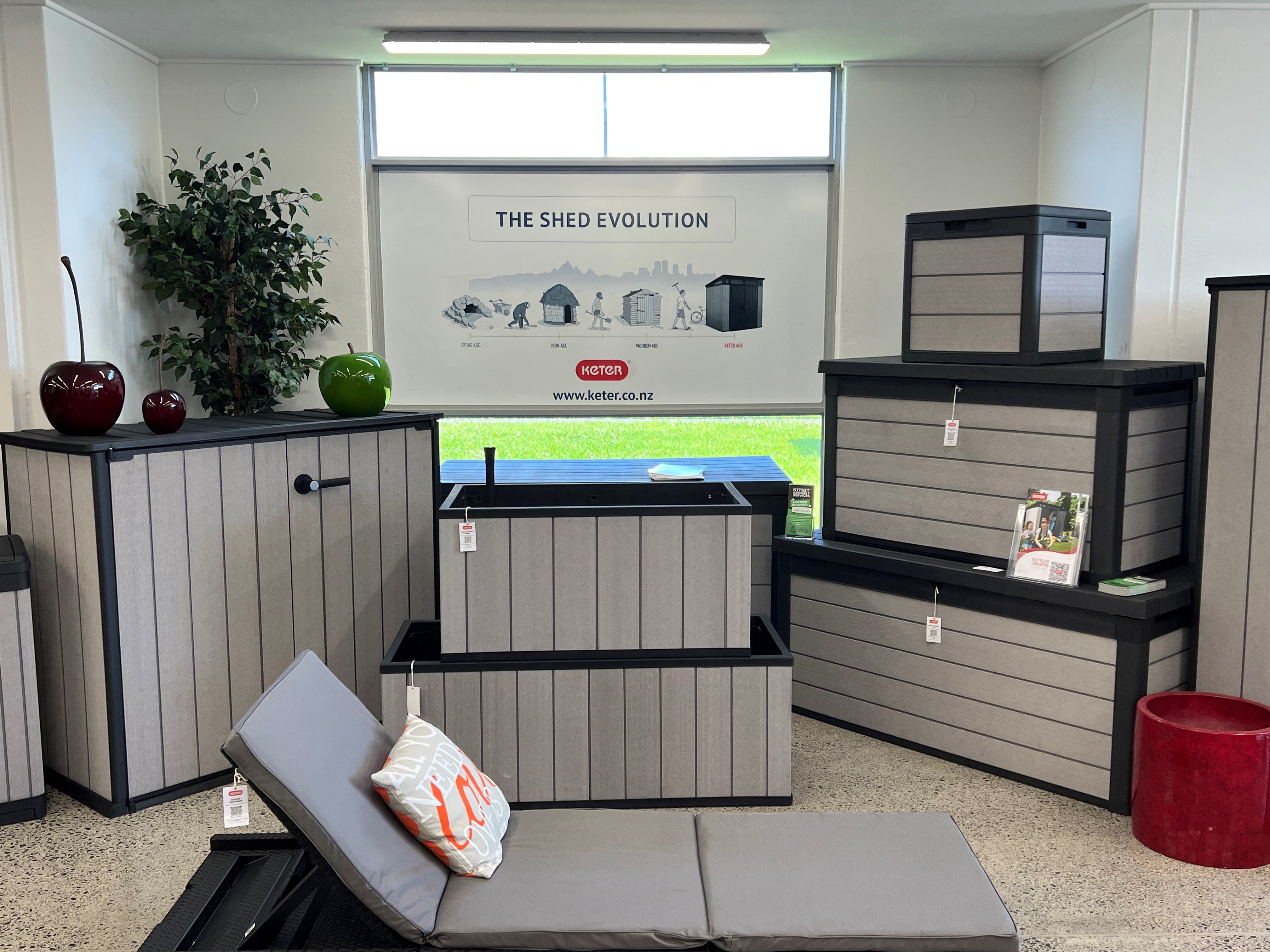A shed can seem to be a complicated purchase. Metal, wood or plastic? Where to put it? How to build a base? Have a look at our top 5 tips on buying a shed which will make the whole thing a lot simpler.
Decide on the shape and size you need first. It’s always best to give yourself more space than you think you need. Measure your space carefully and don’t forget to include the overhang of the shed roof in your measurements. If it’s just to store bikes, then a Keter Store-It-Out Ultra may be just what you need. There are horizontal and vertical sheds. Standalone buildings. Pretty much every size and shape imaginable. Some sheds make it really easy to add shelves which can dramatically increase storage space.
Metal, plastic, wood? What’s the right material for you? Wood always looks nice but require regular maintenance and can be susceptible to rotting. Metal sheds are strong but aren’t pretty and can be hard to erect. Plastic sheds are maintenance-free, easiest to erect and easy to take down if you move property. And Keter plastic sheds look great.
A shed’s biggest enemy is rain. Wooden sheds often leak and rot because of rain running down the walls. To minimise such problems, the roof should overhang the sides by at least 5cm / 2 inch, and the front and back by at least 7.5cm / 3 inch. Measure from the inside edge of the roof, not the outside. Windows can rot at the bottom unless they have sloping sills and a groove cut beneath the sill to help water drip to the ground. If you stand in a closed shed, you should only see daylight through the windows. If you can see light around the windows, rain will also get in.
What are the features you really need? Do you need a shed with a lipped threshold to roll things in and out easily? Do the doors open wide enough? Ventilation to prevent mildew and moisture build up? Light is essential in a shed – look for decent windows and/or a skylight. Security is key if you’re going to store anything of any value – does your shed have a lockable and secure latch?
Plan the installation carefully. Do you need any permission from local authorities? Make sure you have a level base for your shed to sit on – if it’s sloping then the shed won’t fit correctly, and gaps will appear that can let in rain. Erecting a shed is at least a 2 or 3-person job, depending on its size.
And here’s one extra tip – check the warranty information so you can buy with confidence.


